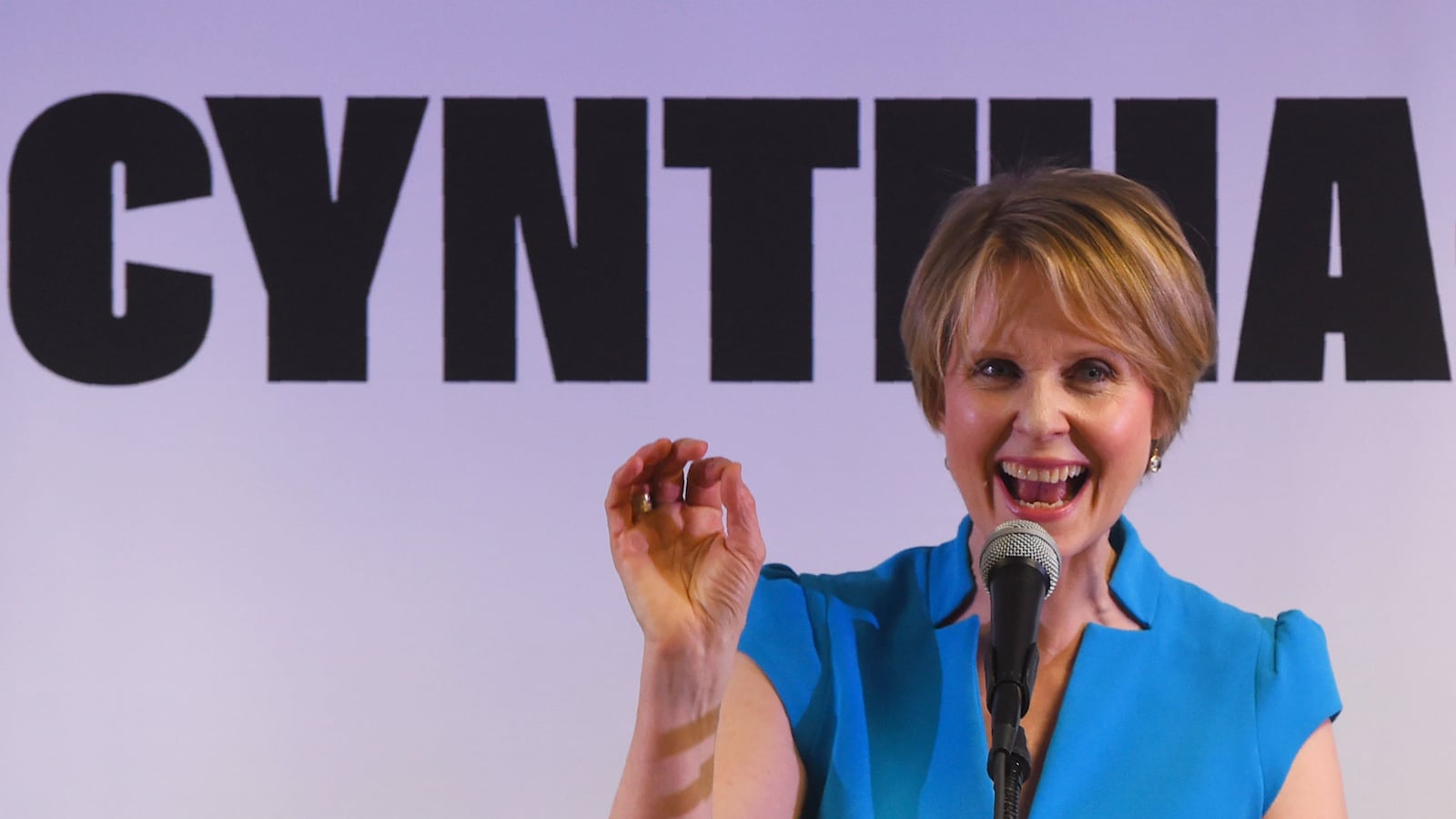One of Cynthia Nixon’s main campaign issues in the New York gubernatorial race comes from an unlikely source — a 1993 lawsuit filed by a group of New York City parents who believed their students weren’t receiving a fair education.
That lawsuit was settled after 13 years, and to satisfy the terms of the 2006 settlement, the state created a funding formula and pledged to provide an infusion of cash to schools. But a group of advocates — including the “Sex and the City” star — say the state still owes schools over $4 billion.
Nixon centered her first Albany appearance since launching her campaign around the issue of school funding.
“Governor Cuomo’s entire argument on school funding is just one big excuse to ignore the lives of students who are black or brown or working-class,” Nixon said on Monday. “The Cuomo budget does not value the lives of the majority of New York’s children.”
The following is a quick history of the Campaign for Fiscal Equity that Chalkbeat put together in 2016, along with some more recent information.
- In 1993, a group of parents and advocates in New York City filed a lawsuit claiming that the state’s education funding formula was unconstitutional.
- In 2006, after a 13-year fight, a New York State Court of Appeals ruled the state owed schools more money in order to provide students with a “sound basic education.”
- The state set out to provide billions in funds to comply with the lawsuit in 2007 and 2008.
- But in 2009, the recession caused the plans to stall. During that year, some wondered if the campaign had failed to deliver on its promise.
- In 2011, the Campaign for Fiscal Equity almost dissolved before becoming part of the Education Law Center. The campaign’s struggle was seen as reflective of a greater shift in education advocacy. “The old mantra was that urban districts failed because they have been historically underfunded; now, advocates are more likely to argue that funding is necessary but not sufficient,” Chalkbeat wrote at the time.
- The next few years were dominated by other education reforms. For instance, the state fought for Race to the Top funding, adopted Common Core and revised teacher evaluations.
- In 2016, the state began backing away from those reforms, and the legislative session seemed to refocus on school funding. The state restored the Gap Elimination Adjustment (a funding cut that mainly hurt wealthier districts) and overall, oversaw a $1.3 billion increase in school aid.
- Still, state officials did not fully restore the money owed to schools under the Campaign for Fiscal Equity. “This budget fails to address fundamental educational inequality based on both race and income,” Billy Easton, executive director of the Alliance for Quality Education, said at the time.
- In 2017, the governor sought to make a controversial change to the Foundation Aid formula, which is how the state sought to divvy up the billions in additional lawsuit funds. Advocates called it a “repeal” of the formula and charged that Cuomo wanted to back out of the state’s commitment to provide billions in school aid. (Cuomo officials say no such requirement exists.)
- Cuomo’s plan to change the foundation aid formula was defeated in last year’s budget and lawmakers provided $700 million in foundation aid.
- In this year’s testimony to state lawmakers, the Alliance for Quality Education argued that $4.2 billion is still owed to schools.

